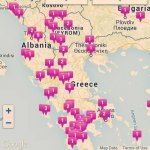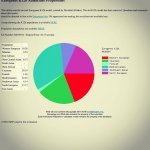Is there hunter-gatherer from Karelia on GedMatch?
Sample Gedmatch ID Snips
Karelian-HG M652848 180k
Yamna 1 M951285 250k
Yamna 2 M020637 200k
Karelian-HG (EHG_Oleniy_Ostrov I0061) M652848
Yamna 1 (Yamnaya_Sok_River I0443) M951285
Yamna 2 (Yamnaya I0231) M020637
Alberstedt I0118 - M467300
Halberstadt LBA I0099 M344778
Corded Ware I0104 M622615
Els Trocs Spain EN R1b1 I0410 M684242*
LBK I0054 - kit M206308*
Corded Ware I0103 - kit M966366
Unetice I0047 - kit M370010
Bell Beaker I0112 M117132
Esperstedt I0172 M303249
T185931 - RISE560 Bell Beaker - Ausburg, Germany
Ostuni1 - Ostuni, Brindisi, Italy - Gravettian (27,810-27,430 cal BP) Gedmatch ID: T947885
M987765 Tep001 Anatolia Early Neolithic [7014 BC] K1a n/a
M830273 Tep003 Anatolia Early Neolithic [7174 BC] N1b1a G2a-P287>P15>PF3159
M471006 I1705 Jordan EBA [2198-1966 BC] H14a J1-P58>Z2324
M682666 I1730 Jordan EBA [2489-2299 BC] R0a1a J2b-M205>PF7331
M631469 RISE349 Hungary MBA [2034-1748 BC] - T2b3
M370663 I0419 Potapovka [2200-1900 BC] R1a-M417>Z93 U2e1h
M630274 I0432 Poltavka outlier [2925-2536 BC] R1a-M417>Z94 U5a1c
M191719 RISE431 Corded Ware Proto-Unetice Poland [2286-2048 BC] R1a-M417 T2e
M974598 RISE374 Maros Hungary [1866-1619 BC] G2a-P287>P15>PF3177 T2b
M733797 RISE109 Unetice EBA Poland [1954-1772 BC] - U4
M453254 RISE154 Unetice EBA Poland [1925-1765 BC] - K1a4a1
M239638 RISE586 Unetice EBA Czech Republic [?] - K1b1a
M375165 RISE373 Maros Hungary [1886-1696 BC] - K1a2a
M130094 RISE61 Battle Axe Denmark [2650-2300 BC] R1a-M417>Z284>CTS8401 J1c4
M235073 I0354 Srubnaya Outlier [2014-1692 BC] U5a1 -
M328175 I0423 Srubnaya [1850-1200 BC] J2b1a2a R1a-M417>Z93
M396326 I0803 Unetice EBA Germany [2132-1942 BC] H4a1a1a -
M825671 I1293 Iran Mesolithic [9100-8600 BC] HV2 J2a-M410>CTS1085
M595455 I1670 Iran Chalcolithic [4839-4617 BC] U3a'c -
M902476 I1662 Iran Chalcolithic [4831-4612 BC] K1a12a J2a-M410>PF5008
M155294 I1674 Iran Chalcolithic [3972-3800 BC] I1c G1-M342>GG372
M873184 I1665 Iran Chalcolithic [3956-3796 BC] U7a -
M381564 F38 Iran EIA [971-832 BC] N1a3a R1b-Z2103>L584>Y23838
T637158 I1955 Iran Late Medieval [1430–1485 AD] U1a1 -
M417230 I1407 Armenia Chalcolithic [4350-3700 BC] H L1a-M27
M133098 I1409 Armenia Chalcolithic [4229-3985 BC] U4a -
M162111 I1632 Armenia Chalcolithic [4230-4000 BC] K1a8 L1a-M27
M734029 I1634 Armenia Chalcolithic [4330-4060 BC] H2a1 L1a-M27
M731608 I1633 Armenia EBA [2619-2410 BC] H1u -
M340653 I1635 Armenia EBA [2619-2465 BC] X2f R1b-M343>L389>V1636
M487536 RISE413 Armenia MBA [1906-1698 BC] T2c1f R1b-M343>L389>P297
M124777 RISE416 Armenia MBA [1643-1445 BC] K1a17a E-M84
M575241 RISE423 Armenia MBA [1402-1211 BC] T2a E-M84>CTS1096 (Y5412-, Y14899-, PF6751-)
M578721 RISE408 Armenia LBA [1209-1009 BC] I5c J2b-M102>L283>CTS3681
M263493 RISE412 Armenia LBA [1193-945 BC] U4c1a -
M062682 RISE396 Armenia LBA [1192-937 BC] H6b -
M497255 RISE397 Armenia LBA [1048-855 BC] T1a2 R1b-Z2103>Z2106>BY3296
M471006 I1705 Jordan EBA [2198-1966 BC] H14a J1-P58>Z2324
M682666 I1730 Jordan EBA [2489-2299 BC] R0a1a J2b-M205>PF7331
M987765 Tep001 Anatolia Early Neolithic [7014 BC] K1a n/a
M830273 Tep003 Anatolia Early Neolithic [7174 BC] N1b1a G2a-P287>P15>PF3159
M300627 Kum4 Anatolia EBA [3500–2800 BC] n/a -
M733797 RISE109 Unetice EBA Poland [1954-1772 BC] U4 -
M453254 RISE154 Unetice EBA Poland [1925-1765 BC] K1a4a1 -
M239638 RISE586 Unetice EBA Czech Republic [?] K1b1a -
M484113 RISE139 Unetice Poland [2135-1923 BC] U2e1f1 n/a
M069028 RISE145 Unetice Poland [2188-1958 BC] H6a1b -
M483824 RISE598 Lithuania LBA [908-485 BC] H2a2 R1a-L62>M417
M669778 RISE1 Corded Ware Poland [2865-2578 BC] K1b1a1 R1b-M343>L754
M191719 RISE431 Corded Ware Proto-Unetice Poland [2286-2048 BC] T2e R1a-M417
M631469 RISE349 Hungary MBA [2034-1748 BC] T2b3 -
M375165 RISE373 Maros Hungary [1886-1696 BC] K1a2a -
M974598 RISE374 Maros Hungary [1866-1619 BC] T2 G2a-P287>P15>PF3177
M130094 RISE61 Battle Axe Denmark [2650-2300 BC] J1c4 R1a-M417>Z284>CTS8401
M370663 I0419 Potapovka [2200-1900 BC] U2e1h R1a-M417>Z93
M630274 I0432 Poltavka outlier [2925-2536 BC] U5a1c R1a-M417>Z94
M214301 RISE595 Montenegro LBA [?] U5a2 -
M836655 RISE596 Montenegro IA [?] X1'2'3 -
M030961 K8 Bulgaria IA [450-400 BC] n/a -
M212372 P192-1 Bulgaria IA [800-500 BC] U3b E-M78>Z1919
M540478 T2G2 Bulgaria IA [850-700 BC] HV(16311) -
M777769 V2 Bulgaria LBA [1500-1100 BC] n/a -
http://www.anthrogenica.com/showthread.php?8672-List-of-ancient-samples-on-GEDmatch


